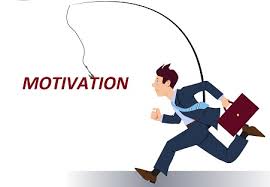Another important factor in determining an individual’s tendency to learn is motivation. Motivation is concerned with an individual’s internal as well as external energies in the direction of an intended goal.
An individual cannot learn effectively if he is not motivated to do so. Hence, teachers need to understand the concept of motivation and how it applies to teaching and learning processes. This is the focus of this unit.
What is Motivation
The term motivation has been defined in several ways. In a nutshell, motivation answers the question: why a behavior? That is, why does a person behave in the manner he behaves.
An answer to this question is pertinent for teachers. If teachers can understand the reason for the actions or responses of their students, then they can be able to facilitate learning in the classroom.
A more simplified definition of motivation is as follows:
– Motivation is the force or condition within the organism that impels it to act or respond.
– Another definition claims that motivation refers to the biological, social and learned factors that initiate, sustain and stop goal-directed behavior.
Read Also: Factors that Determine Readiness to Educational Learning
From these definitions three types of motivation may be discerned:
1) Extrinsic Motivation:
These include those forces outside an individual that regulates his behavior. The energizing motive is something external to the individual (e.g. food, water etc.). Teacher use of this type of motivation needs to be judicious and commensurate with effort put in. Teachers should avoid use of expensive things to motivate students.
2) Intrinsic Motivation:
These include forces within the individual. It has nothing to do with the external world. It is a sort of motivation that comes as a result of an inherent feeling of self-satisfaction as one participates in learning activity.
This kind of motivation is tied to the learning task itself. Therefore, teachers need to provide relevant simple and appropriate learning task to the learners if this type of motivation is to be sustained.
3) Achievement Motivation:
This refers to the motivation for achievement in the school, place of work, profession etc. It implies the craving for accomplishment, conquest, competence etc.
Achievement of success in learning is thus determined by student’s motive to achieve. Thus, if a learning task that has low probability of success is given little incentive, achievement will likely be curtailed than if the incentive is high.
Theories of Motivation
There are numerous theories of motivation. Some of these are briefly stated as follows:
1) Hedonistic Theory
Those who subscribe to this theory are of the view that human actions are mainly triggered by a desire for pleasure and the avoidance of pain. In other words people engage in activities for no other reason than the pleasure associated with them.
2) Physiological Equilibrium Theory
This theory holds that human beings are supposedly by a balanced state of physiology. This balanced state is called ”Homeostasis”. Ideally, as long as this state of equilibrium is maintained, it seems there will be no need for human activity.
However, because this equilibrium is inevitably distorted presumably from birth, human activity begins with the motivating force being the desire to recapture the physiological equilibrium. Thus, hunger, thirst, etc., signify a disequilibrium that leads to need, drive and consequently activities to satisfy them.
Related: Sid the Science Kid Series: Why Kids love to Watch it on PBS
3) Drive Reduction Theory
This theory postulates that human beings act in order to reduce drive. A drive is a state of tension which occurs whenever a need (want or deficiency) exists. The need could be physiological or social.
The motivational force wherever a drive exists is reduction of the accompanying tension, which is usually unbearable.
4) Cybernetic Theory
This theory sees motivation as being intrinsically attached to human activity. The theory claims that motivational force flows from within the individual rather than being a result of pursuing outside incentives.
Forces such as curiosity, competence, and reciprocity are three forms of intrinsic motivation.
5) Conditioning Theory
This theory sees motivation purely in terms of antecedent factors or consequence of behavior. Human beings act in anticipating positive consequences of their actions.
6) Maslow’s Growth Theory
This theory views motivation as a growth process moving from a lower to higher level. All human activities are motivated by the desire to pass through what he calls the hierarchy of motives. Human beings act to satisfy hierarchy of needs hierarchy is as follows.
High 5 Self Actualization
4 Self-esteem
3 Belongingness and love affiliation
2 Safety needs
Low 1 Physiological
Ways of Motivating Students for Better Learning
The following ways are recommended for teachers on how to motivate students for effectively learning.
- Make your lesson interesting and appealing.
- Develop a state of need in the students by exposing them to the objectives of the lesson.
- Structure your learning situation and materials in a way that allows success in earlier steps, reinforce later steps.
- Provide adequate feed back to students on a continuous basis.
- Make judicious use of incentives. Evolve a token economy system.
- Develop an atmosphere for healthy competition among students.
- Make all learning meaningful and relevant to the experiences of the students.
- Develop curiosity by widening the experiential horizon of the students.
- Make all learners pleasant, desirable and worthwhile.
- Develop positive attitude and intentions toward learning in students.
Summary
One of the basic learning condition is motivation. Without motivation, human beings cannot act or function properly. Equally important is motivating students for effective learning. Without applying effective strategies for motivation, students learning cannot take place.
Read Also: Meaning of Educational Psychology
